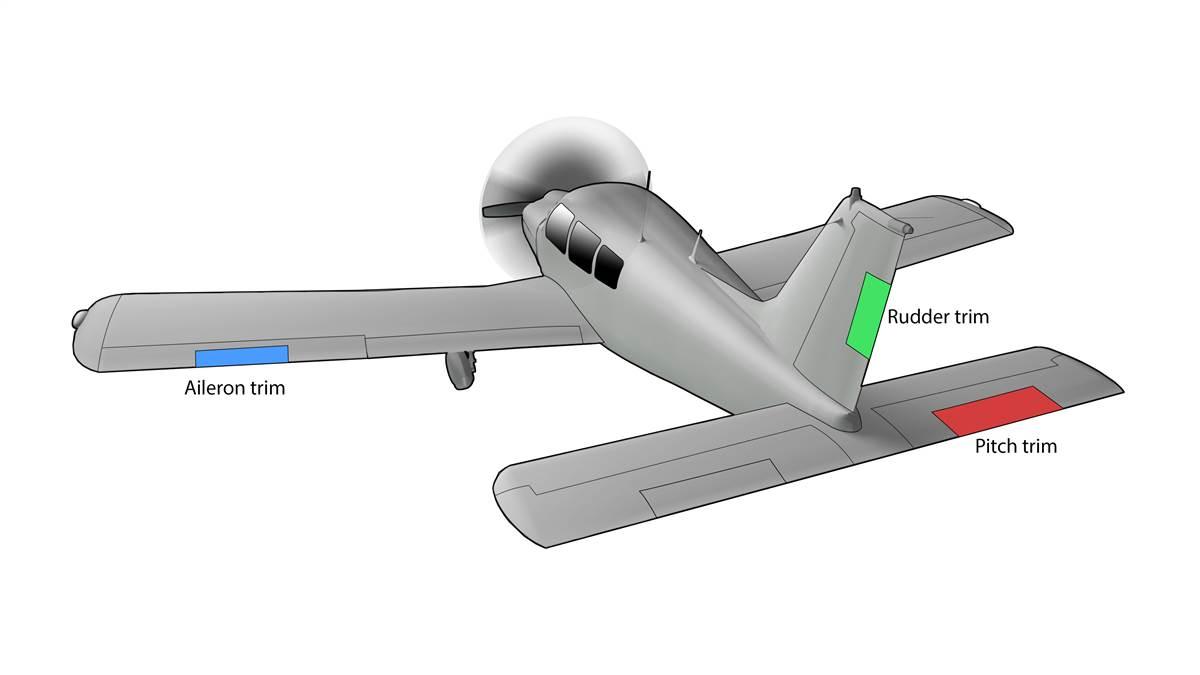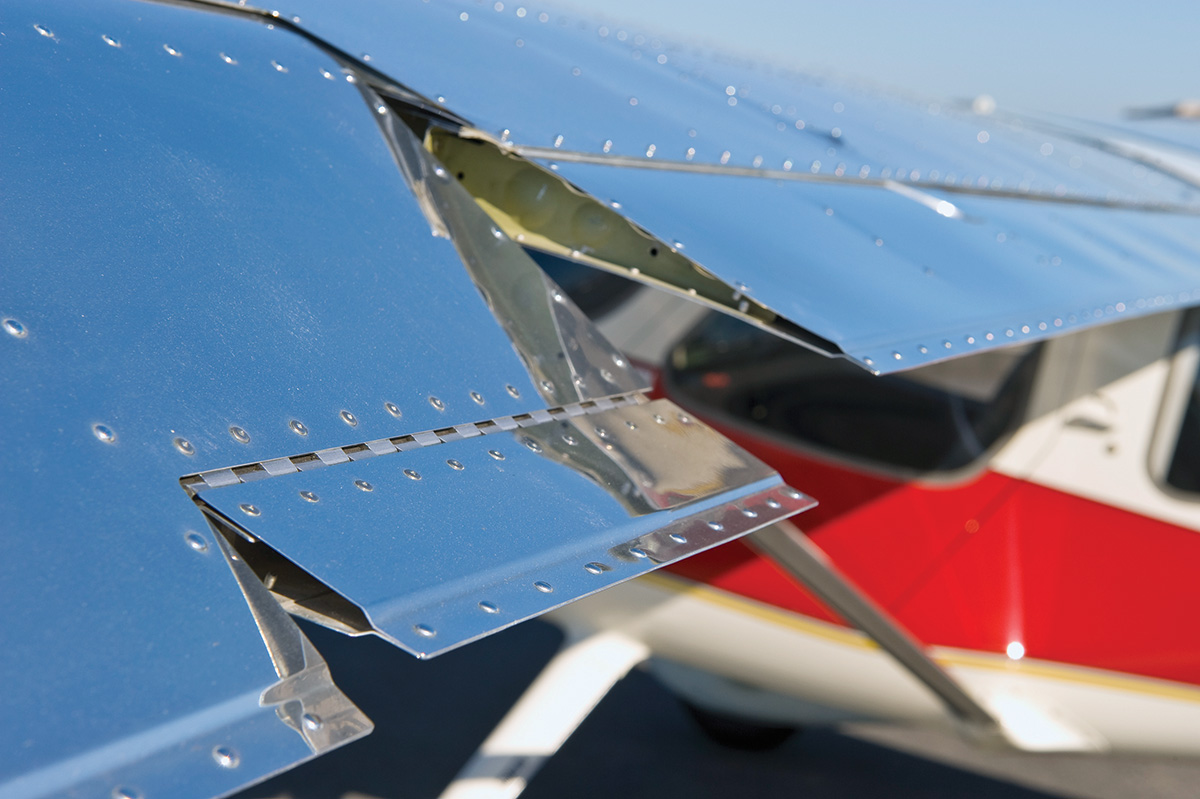Aircraft Trim Tabs - Members Learn More Save More - Get More From Being a Pilot - Click Here
Trim Tips/Most trim tabs are called Servo tabs and will move to the opposite side of the main control surface it affects. Elevator up (as in climb) - Trim tab moves down. Elevator descending (as in descending) - trim tab moves up. The picture is an anti-servo piece that will move with the elevator.
Aircraft Trim Tabs

The clutch allows the pilot to fine-tune the flight position so that manual flight can be maintained. This provides a good ride experience for the passengers and reduces the workload for the pilot. The magic of pitch trim is that once your trainer is trimmed, your airspeed will not change until you re-trim.
The Final Flight Of The Mac 1
It's about touch. Pilots who are proficient at trimming will wait until the plane has stabilized to the desired flight position - such as cruising at 100 knots after a climb - before trimming. Skilled trimmers don't fiddle with trim controls when pitch jamming messes things up. Instead, the pilot allows the aircraft's inherent stability to restore the trim setting. This design feature allows the pilot to switch to other duties, helping to avoid over-control and pilot fatigue.
Step 1: Level Descending Decrease the pitch view until the climb level reaches zero. This requires keeping the pressure on the yoke forward. Allow the aircraft to accelerate to cruising airspeed. Add stick weight as needed (since the airplane is tuned for climb speed, not cruise speed); maintain a pitch attitude that maintains smooth flight. In an aircraft with a fixed pitch propeller, the rotational speed will increase at this rate. If it's difficult to keep enough weight forward, some trim can be used to maintain aggressive pitch control (but that's not the end goal of trim, as you can see).
STEP TWO: SET POWER As the airspeed approaches the desired cruise value, turn the RPM or pressure multiplier back to the value recommended by the performance charts for the desired cruise airspeed. Be patient at this point. Allow the aircraft to accelerate to a steady cruising speed before proceeding to the next step.
Step Three: Add and Adjust Apply nose-down trim in small but definite increments until hand pressure on the yokeor stick is no longer required. Make sure this is the case by loosening the yoke and letting go of your hands, maintaining gentle steering pressure on your head.
Rudder Trim Tab Hi Res Stock Photography And Images
Step Four: Watch What Happens Monitor your instrument for constant ASI and altitude. (If trimming for a climb or descent, check the desired airspeed or vertical rate of change.) If corrections are required, make corrections in the same order as above.
Common Mistakes Not planning. Do not use the trim as an elevator control! Trim specific power/spacing combinations.
There is no need to wait until the aircraft reaches a steady state. Impatience or anxiety often causes pilots to rush through the process. If the aircraft is not fixed in the desired flight position - whether cruising level, or climbing or descending at a steady or constant airspeed, trim cannot achieve its goal.

"Chasing" a pitch change or speed. Turbulence messes with trim settings, but dynamic stability causes the plane to go through a series of gentle deceleration oscillations, bringing it back to its original shape. A pilot who doesn't understand this aerodynamic behavior tends to get involved too quickly and doesn't finish what he started until the next disturbance restarts.
Prop Ventilation When Using Trim Tabs
Change the power setting after the clutch is done. An airplane that you design to fly horizontally at 100 knots at 2,200 rpm will stall at 100 knots if the power is reduced. With increased power it will climb at 100 knots. So if you change the power setting but try to maintain level flight, the result will be a new cruise flight - you have to reverse it.
Dan Namowitz has been writing for in a variety of capacities since 1991. He has been a flight instructor since 1990 and is a 35-year member.
Some students may be confused by the pitch trim wheel: that small, round, thin disc used to reduce control pressure.
Yes, the function of the joystick/stick and rudder is easy to understand. But the pitch trim wheel is an important part of the control system package. It is activated every time the aircraft changes configuration - such as extending or retracting flaps, turning, climbing, descending or maintaining a selected airspeed. Increase or decrease power each time.
Basic Aircraft Control System
As these changes occur, the airflow and air loads on the horizontal stabilizer and elevator also change. Add strength and the nose will rise. Reduce the power and the nose will fall off. If you're trying to maintain altitude, you may find yourself putting in extra effort pushing or pulling the lever. You need some help to work off those extra forces and reduce your workload. This is where trimming wheels come in.
The trim wheel moves the trim tab on the left edge of the elevator, which in turn changes the position of the entire elevator. Move the trim wheel appropriately and the trim tab will move the elevator to compensate for any lift changes from the empennage surface. In flight, you'll find the trim wheel very useful in setting the thrust so you can fly with your hands - whether climbing, descending or straight level.
How does the pruning pruning system work? The trim wheel in the cockpit is connected to the sprocket, and the chain rides on the sprocket's teeth. The chain is transferred (tightly coiled) to a long length of braided stainless steel cable that passes through pulleys and rails under the panels and cabinet floors. This cable goes all the way to the tail where it makes several turns through two other coils. Finally, it is transferred to another chain. This chain also rides on the sprockets. As the sprocket turns, it moves the tab actuator, which moves the tab up or down. You can see the actuator connection to the trim tab - and you should check its integrity during every preflight inspection.

Where does the chain go from there after it does the job of moving the tab actuator? It connects to another cable that goes through the pulley and back to the trim wheel in the cockpit. The system is a closed loop with chains at both ends.
Cbt Aviation Course Diamond Da42 Ng
Electric trim control systems are more complex, using switches and servos to move cables and sprockets. Instead of manually moving the trim wheel, you simply press a slide switch on the control stalk to trim the nose up or down.
One major problem that can arise with electronically controlled trim systems is that the trim motors can "run away," sending the aircraft into an uncommanded pitching motion. To prevent this, pull the trim motor breaker. Now you're back to manually trimming with the trim wheel, just like you learned when you first started flying.
Pilot Editor at Large Tom Horne has been with the company since the early 1980s. He began flying in 1975 and holds an Air Transport Pilot and Flight Instructor certificate. He has flown everything from microlights to Gulfstreams, and also crossed the Atlantic in several piston aircraft.
My flight instructor has been fiddling with the trim wheel. It sits in the console between our seats and is a black wheel with a knob. Scrolling it up changes the pitch to more of a nose position, while scrolling it down does the opposite. I know he's adjusting to keep us level, but this confuses me - and adds to my lack of understanding of trim labels.
Probe Into Deadly Nev Crash Focuses On Wayward Part
Factors such as wind, power conditions, airspeed and attitude can affect the amount of control a pilot needs and can cause overcompensation or constant fatigue stress on the controls. The ability to adjust the cut and reduce the stress of control has to be the stress reliever of the patient coach. Changing the position of the trim tab changes the neutral position of the control surfaces, such as the elevator or rudder. The trim tab allows the operator (in this case my flight instructor) to minimize the manual input required to hold position.
Basic trim tabs are attached to the lift edges of the aircraft. Adjust the elevator trim by rolling the small black wheel forward (up), the aircraft nose down. Roll back and the nose of the plane will go up. Some aircraft have rudders that can be used to help compensate for the aircraft's tendency to move to the left or to adjust for pulling to one side in cruise.
My co-worker told me that her Piper Cherokee 140 has a trim wheel that sits on top of the plane, and when she reached to turn it on her first flight with her husband, he asked, "Now, what are you doing?" But , while she was adjusting to make him lie flat, she was too busy to explain. Even if you're a really neurotic novice, you can look like a smooth operator with proper use of the trim tab

Spring loaded trim tabs, aircraft trim, trim tabs, aircraft tabs, fixed trim tabs aircraft, trim tabs aircraft, m120 trim tabs, trim tabs boat, minn kota trim tabs, trim tabs in aircraft, lenco trim tabs switch, humphree trim tabs
0 Comments